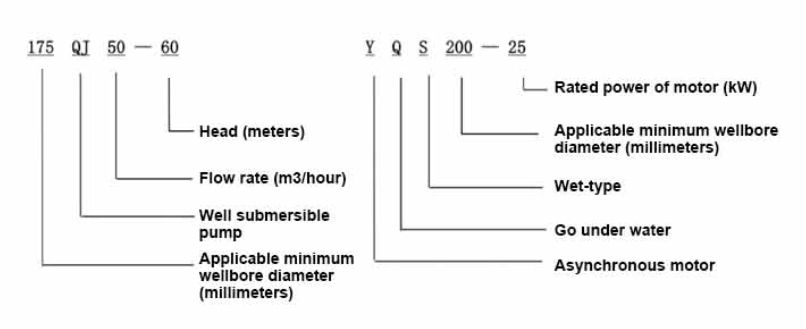Oct . 20, 2024 00:25 Back to list
submersible solar pump
Submersible Solar Pumps An Innovative Solution for Water Supply
In recent years, the demand for sustainable water supply solutions has surged, particularly in remote and arid regions where access to traditional energy sources can be limited or prohibitively expensive. One effective and eco-friendly solution that has emerged is the submersible solar pump. This innovative technology harnesses solar energy to pump water from underground sources, providing a reliable and sustainable water supply for various applications, including agriculture, drinking water, and irrigation.
What is a Submersible Solar Pump?
A submersible solar pump consists of a pump, a motor, and solar panels, all designed to work together efficiently. The pump is submerged underwater, typically in boreholes or wells, and is connected to the solar panels, which convert sunlight into electricity. This energy powers the motor, allowing the pump to lift water to the surface. The system can be installed in a variety of locations, making it highly versatile for a range of users.
Benefits of Submersible Solar Pumps
1. Renewable Energy Source One of the most significant advantages of submersible solar pumps is their reliance on solar energy, a renewable and inexhaustible resource. This eliminates dependence on fossil fuels and reduces carbon emissions, contributing to a cleaner environment.
2. Cost-Effectiveness Although the initial investment for a submersible solar system can be higher than traditional pumps, the long-term savings are substantial. With no fuel costs and minimal maintenance requirements, users can significantly reduce their water pumping expenses over time.
3. Sustainability and Reliability Solar pumps are particularly valuable in areas where electricity supply is inconsistent or where grid access is limited. These pumps can operate efficiently in remote locations, ensuring that communities have continuous access to water, even in areas without traditional energy infrastructure.
4. Easy Installation and Maintenance Submersible solar pumps are often easier to install than conventional pumps. They do not require extensive electrical wiring, making them ideal for rural or remote areas. Additionally, their simple design means that maintenance can be performed with relative ease.
submersible solar pump

5. Versatile Applications The versatility of submersible solar pumps allows them to be used in various applications, including agricultural irrigation, livestock watering, municipal water supply, and even for recreational purposes such as fishing or swimming. As such, they can significantly enhance water accessibility across sectors.
Considerations When Using Submersible Solar Pumps
While submersible solar pumps offer numerous advantages, there are some considerations to keep in mind
- Sunlight Availability The efficiency of solar pumps is directly linked to the availability of sunlight. In regions with prolonged periods of cloud cover or rainy seasons, supplementary energy sources might be necessary to ensure consistent operation.
- Pump Sizing and Selection Proper sizing of the pump is crucial for optimal performance. Users must consider the depth of the water source, desired flow rate, and total dynamic head when selecting a pump to ensure it meets their specific needs.
- Initial Investment Although solar pumps can lead to long-term savings, the upfront cost may be a barrier for some individuals or communities. However, various financing options or governmental incentives may help alleviate these initial expenses.
Conclusion
Submersible solar pumps represent an exciting advancement in sustainable water management. By harnessing the power of the sun, these systems provide reliable access to clean water in an environmentally friendly way. As technology continues to evolve, it is likely that the efficiency and affordability of submersible solar pumps will improve, making them an even more attractive option for communities around the globe. Investing in such systems not only addresses immediate water supply challenges but also contributes to broader sustainability goals and environmental preservation. By embracing this innovative technology, we can pave the way for a more resilient and water-secure future.
-
Submersible Water Pump: The Efficient 'Power Pioneer' of the Underwater World
NewsJul.01,2025
-
Submersible Pond Pump: The Hidden Guardian of Water Landscape Ecology
NewsJul.01,2025
-
Stainless Well Pump: A Reliable and Durable Pumping Main Force
NewsJul.01,2025
-
Stainless Steel Submersible Pump: An Efficient and Versatile Tool for Underwater Operations
NewsJul.01,2025
-
Deep Well Submersible Pump: An Efficient 'Sucker' of Groundwater Sources
NewsJul.01,2025
-
Deep Water Well Pump: An Efficient 'Sucker' of Groundwater Sources
NewsJul.01,2025
-
 Submersible Water Pump: The Efficient 'Power Pioneer' of the Underwater WorldIn the field of hydraulic equipment, the Submersible Water Pump has become the core equipment for underwater operations and water resource transportation due to its unique design and excellent performance.Detail
Submersible Water Pump: The Efficient 'Power Pioneer' of the Underwater WorldIn the field of hydraulic equipment, the Submersible Water Pump has become the core equipment for underwater operations and water resource transportation due to its unique design and excellent performance.Detail -
 Submersible Pond Pump: The Hidden Guardian of Water Landscape EcologyIn courtyard landscapes, ecological ponds, and even small-scale water conservancy projects, there is a silent yet indispensable equipment - the Submersible Pond Pump.Detail
Submersible Pond Pump: The Hidden Guardian of Water Landscape EcologyIn courtyard landscapes, ecological ponds, and even small-scale water conservancy projects, there is a silent yet indispensable equipment - the Submersible Pond Pump.Detail -
 Stainless Well Pump: A Reliable and Durable Pumping Main ForceIn the field of water resource transportation, Stainless Well Pump has become the core equipment for various pumping scenarios with its excellent performance and reliable quality.Detail
Stainless Well Pump: A Reliable and Durable Pumping Main ForceIn the field of water resource transportation, Stainless Well Pump has become the core equipment for various pumping scenarios with its excellent performance and reliable quality.Detail
